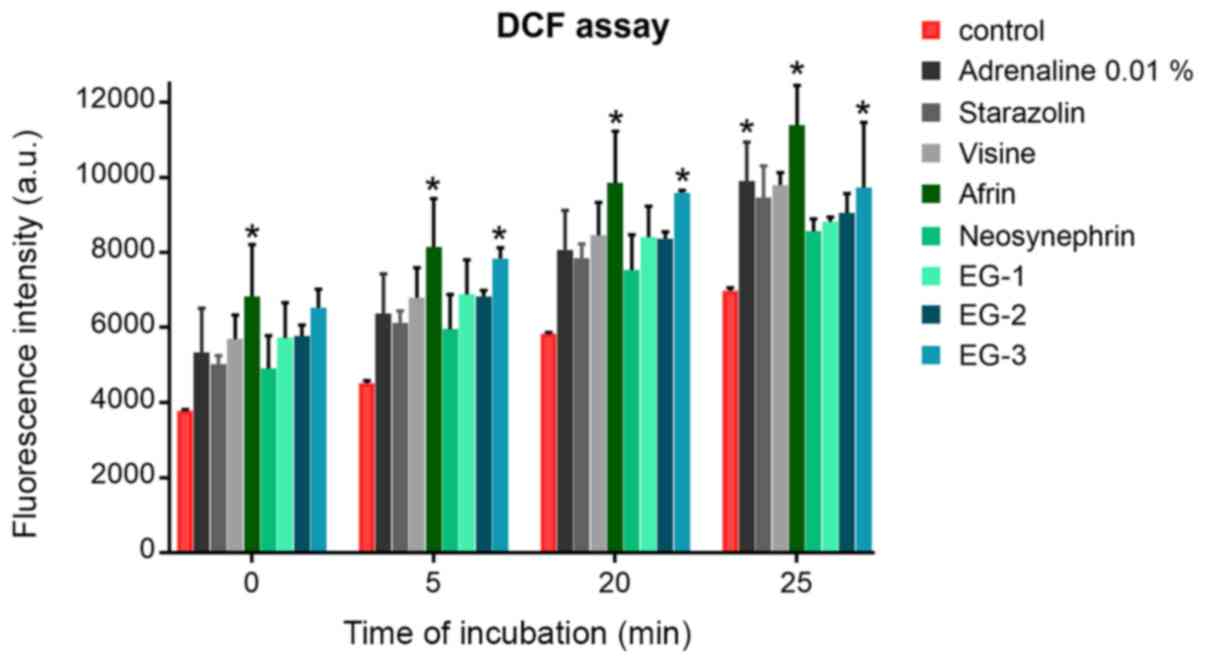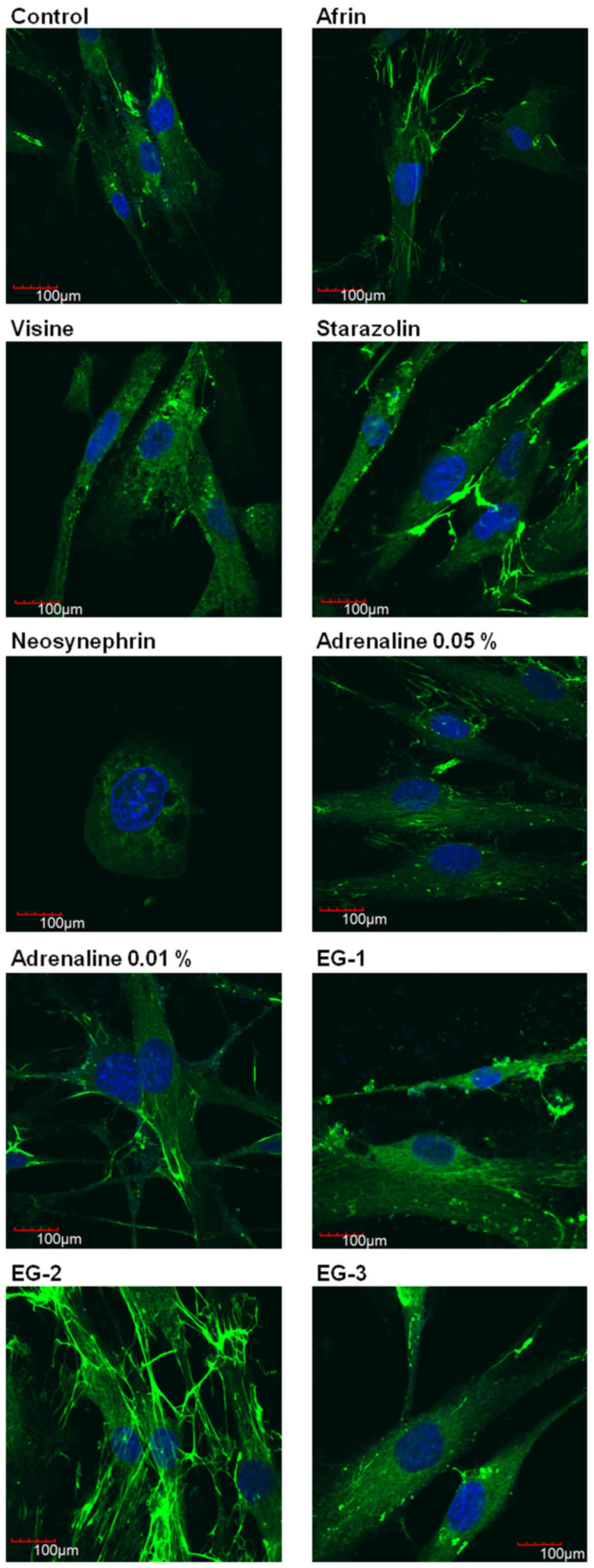|
1
|
Nowakowska D, Saczko J, Kulbacka J and
Więckiewicz W: Chemical Retraction Agents–in vivo and in vitro
studies into their physico-chemical properties, biocompatibility
with gingival margin tissues and compatibility with elastomer
impression materials. Mini Rev Med Chem. 17:435–444. 2017.
View Article : Google Scholar : PubMed/NCBI
|
|
2
|
Bennani V, Schwass D and Chandler N:
Gingival retraction techniques for implants versus teeth: Current
status. J Am Dent Assoc. 139:1354–1363. 2008. View Article : Google Scholar : PubMed/NCBI
|
|
3
|
Felpel LP: A review of
pharmacotherapeutics for prosthetic dentistry: Part I. J Prosthet
Dent. 77:293–305. 1997. View Article : Google Scholar : PubMed/NCBI
|
|
4
|
Nowakowska D: Classification of chemical
retraction agents. Protet Stomatol. 58:202–208. 2008.(In
Polish).
|
|
5
|
Phatale S, Marawar PP, Byakod G, Lagdive
SB and Kalburge JV: Effect of retraction materials on gingival
health: A histopathological study. J Indian Soc Periodontol.
14:35–39. 2010. View Article : Google Scholar : PubMed/NCBI
|
|
6
|
Chaudari J, Prajapati P, Patel J,
Sethuraman R and Naveen YG: Comparative evaluation of the amunt of
gingival displacement produced by three different retraction
systems: An in vivo study. Contemp Clin Dent. 6:189–195. 2015.
View Article : Google Scholar : PubMed/NCBI
|
|
7
|
Akca EA, Yildirim E, Dalkiz M, Yavuzyilmaz
H and Beydemir B: Effects of different retraction medicaments on
gingival tissue. Quintessence Int. 53–59. 2016.
|
|
8
|
Al Hamad KQ, Azar WZ, Alwaeli HA and Said
KN: A clinical study on the effects of cordless and conventional
retraction techniques on the gingival and periodontal health. J
Clin Periodontol. 35:1053–1058. 2008. View Article : Google Scholar : PubMed/NCBI
|
|
9
|
Goldberg PV, Higginbottom FL and Wilson
TG: Periodontal considerations in restorative and implant therapy.
Periodontol 2000. 25:100–109. 2001. View Article : Google Scholar : PubMed/NCBI
|
|
10
|
Nowakowska D and Raszewski Z: The pH value
of conventional and experimental gingival margin retraction
medicaments. Dent Med Probl. 47:76–80. 2010.
|
|
11
|
Katareva I, Georgieva K, Simeonov S,
Doychinova M and Tonchev T: Application of xylometazoline for
chemo-mechanical retraction of the free gingiva. J of IMAB.
21:849–852. 2015. View Article : Google Scholar
|
|
12
|
Gerhard-Szép S: Cytotoxic potential of
HCl-xylometazoline-based gingival retraction solutions. DZZ 2ß16.
38–50. 2016.
|
|
13
|
Buchanan WT, Thayer KE and Yoder JL:
Systemic effects of epinephrine-impregnated retraction cord in
fixed partial denture prosthodontics. J Am Dent Assoc. 104:482–484.
1982. View Article : Google Scholar : PubMed/NCBI
|
|
14
|
Bader JD, Bonito AJ and Shugars DA: A
systematic review of cardiovascular effects of epinephrine on
hypertensive dental patients. Oral Surg Oral Med Oral Pathol Oral
Radiol Endod. 93:647–653. 2002. View Article : Google Scholar : PubMed/NCBI
|
|
15
|
Fazekas A, Csempesz F, Csabai Z and Vág J:
Effects of pre-soaked retraction cords on the microcirculation of
the human gingival margin. Oper Dent. 27:343–348. 2002.PubMed/NCBI
|
|
16
|
Csillag M, Nyiri G, Vag J and Fazekas A:
Dose-related effects of epinephrine on human gingival blood flow
and crevicular fluid production used as a soaking solution for
chemo-mechanical tissue retraction. J Prosthet Dent. 97:6–11. 2007.
View Article : Google Scholar : PubMed/NCBI
|
|
17
|
Bowles WH, Tardy SJ and Vahadi A:
Evaluation of new gingival retraction agents. J Dent Res.
70:1447–1449. 1991. View Article : Google Scholar : PubMed/NCBI
|
|
18
|
Kopač I, Cvetko E, Pavlica Z and Marion L:
Gingival tissue inflammatory response following treatment with
chemical retraction agents in Beagle dogs. Pflugers Arch. 442 (6
Suppl 1):R145–R146. 2001. View Article : Google Scholar : PubMed/NCBI
|
|
19
|
Kopač I, Cvetko E and Marion L: Gingival
inflammatory response induced by chemical retraction agents in
beagle dogs. Int J Prosthodont. 15:14–19. 2002.PubMed/NCBI
|
|
20
|
Kostić I, Mihailović D, Najman S,
Stojanović S and Kostić M: The rabbit gingival tissue response to
retraction liquids and tetrahydrozoline. Vojnosanit Pregl.
71:46–51. 2014. View Article : Google Scholar : PubMed/NCBI
|
|
21
|
Kopač I, Batista U, Cvetko E and Marion L:
Viability of fibroblasts in cell culture after treatment with
different chemical retraction agents. J Oral Rehabil. 29:98–104.
2002. View Article : Google Scholar : PubMed/NCBI
|
|
22
|
Kopač I, Sterle M and Marion L: Electron
microscopic analysis of the effects of chemical retraction agents
on cultured rat keratinocytes. J Prosthet Dent. 87:51–56. 2002.
View Article : Google Scholar : PubMed/NCBI
|
|
23
|
Liu CM, Huang FM, Yang LC, Chou LS, Chou
MY and Chang YC: Cytotoxic effects of gingival retraction cords on
human gingival fibroblasts in vitro. J Oral Rehabil. 31:368–372.
2004. View Article : Google Scholar : PubMed/NCBI
|
|
24
|
Liu J, Zhang XM, Hao PJ, Hui M and Yu HY:
Comparison of cytotoxicity between chemical retraction agents on
human gingival fibroblasts in vitro. Hua Xi Kou Qiang Yi Xue Za
Zhi. 27:202–205. 2009.(In Chinese). PubMed/NCBI
|
|
25
|
Nowakowska D, Saczko J, Kulbacka J and
Choromanska A: Dynamic oxidoreductive potential of astringent
retraction agents. Folia Biol (Praha). 56:263–268. 2010.PubMed/NCBI
|
|
26
|
Nowakowska D, Saczko J, Kulbacka J,
Choromanska A and Raszewski Z: Cytotoxic potential of
vasoconstrictor experimental gingival retraction agents: In vitro
study on primary human gingival fibroblasts. Folia Biol (Praha).
58:37–43. 2012.PubMed/NCBI
|
|
27
|
Dominiak M and Saczko J: Method of primary
culture of human fibroblasts for autologous augmentation. PL patent
209784B1. Filed December 4, 2006, issued October 31. 2011.
|
|
28
|
Nowakowska D, Panek H, Nowakowska M and
Nowakowska A: Gingival retraction-survey results of Polish
dentists. Part 2. Clinical habits related to retraction procedures.
Protet Stomatol. 56:361–366. 2006.
|
|
29
|
Nowakowska D, Saczko J, Bieżuńska-Kusiak
K, Choromańska A, Dubińska-Magiera M, Ziętek M and Kulbacka J: The
influence of retraction agents on cytoskeleton reorganization and
oxidative stress in primary human gingival fibroblasts (HGFs). Arch
Oral Biol. 59:341–348. 2014. View Article : Google Scholar : PubMed/NCBI
|
|
30
|
Fedchenko N and Reifenrath J: Different
approaches for interpretation and reporting of immunohistochemistry
analysis results in the bone tissue-a review. Diagn Pathol.
9:2212014. View Article : Google Scholar : PubMed/NCBI
|
|
31
|
Walker RA: Quantification of
immunohistochemistry-issues concerning methods, utility and
semiquantitative assessment I. Histopathology. 49:406–410. 2006.
View Article : Google Scholar : PubMed/NCBI
|
|
32
|
Zabel M: Immunocytochemia. 1st. PWN;
Warszawa: 1999
|
|
33
|
Kim MC, Neal DM, Kamm RD and Asada HH:
Dynamic modeling of cell migration and spreading behaviors on
fibronectin coated planar substrates and micropatterned geometries.
PLoS Comput Biol. 9:e10029262013. View Article : Google Scholar : PubMed/NCBI
|

















